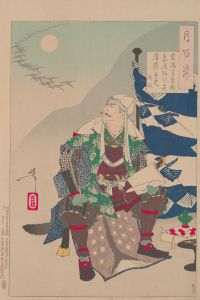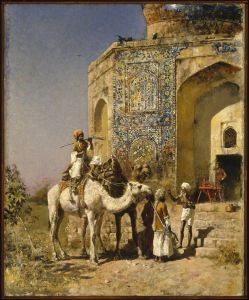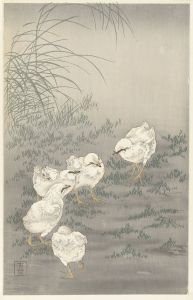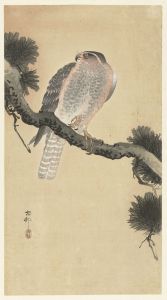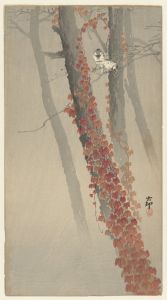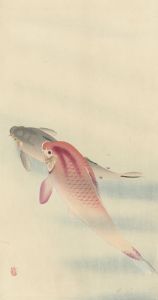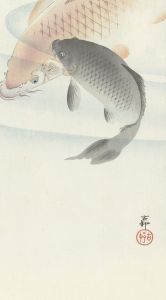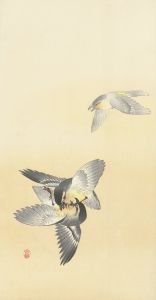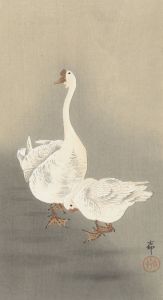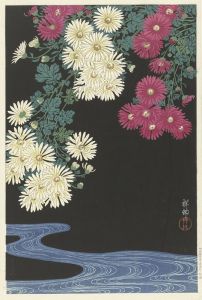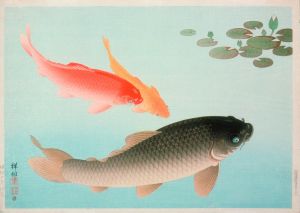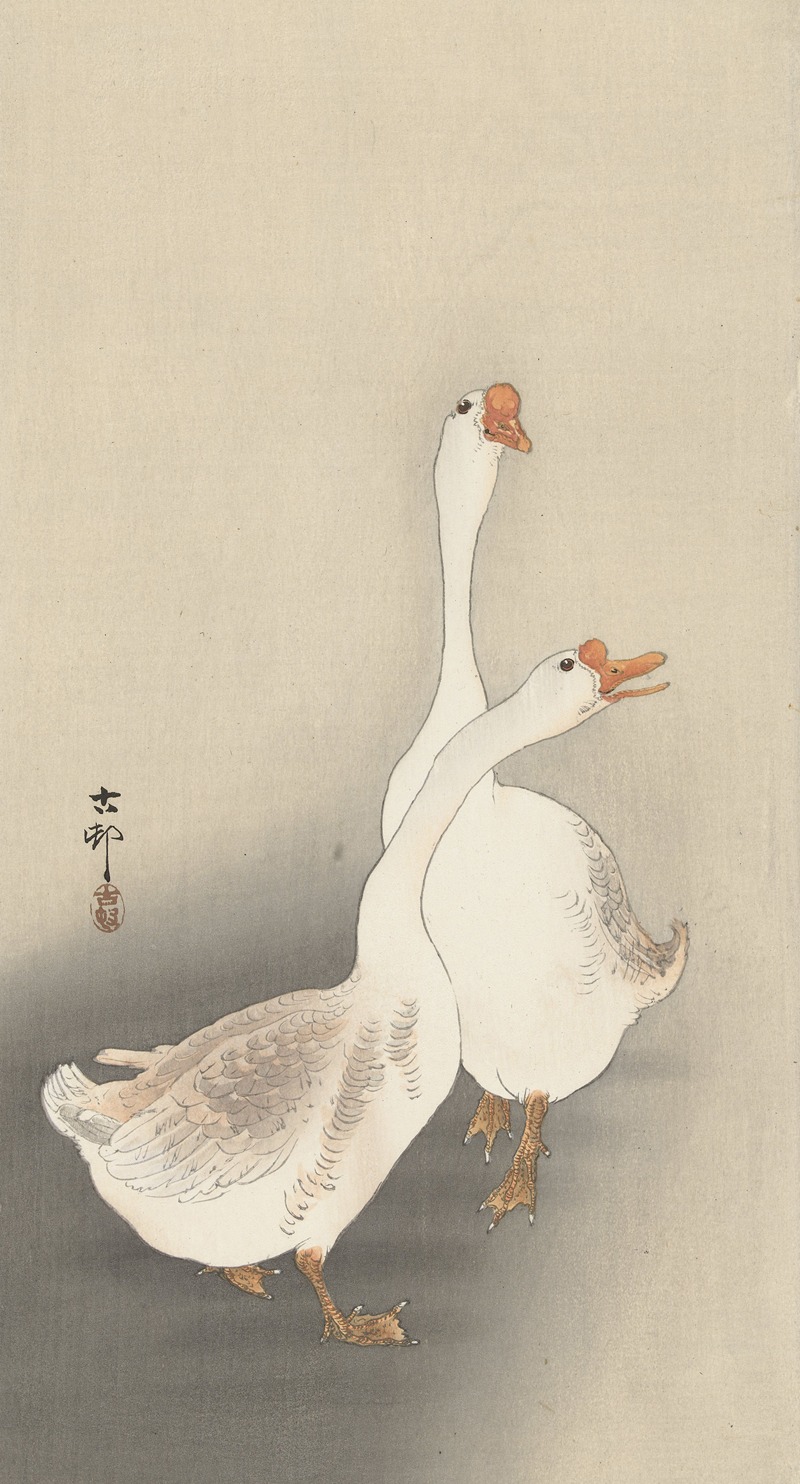
Two geese.
A hand-painted replica of Ohara Koson’s masterpiece Two geese., meticulously crafted by professional artists to capture the true essence of the original. Each piece is created with museum-quality canvas and rare mineral pigments, carefully painted by experienced artists with delicate brushstrokes and rich, layered colors to perfectly recreate the texture of the original artwork. Unlike machine-printed reproductions, this hand-painted version brings the painting to life, infused with the artist’s emotions and skill in every stroke. Whether for personal collection or home decoration, it instantly elevates the artistic atmosphere of any space.
Ohara Koson (1877–1945) was a prominent Japanese artist known for his exquisite woodblock prints, particularly those depicting birds and flowers, a genre known as kachō-ga. His work is highly regarded for its delicate beauty and attention to detail, and he is considered one of the leading figures in the shin-hanga movement, which revitalized traditional Japanese woodblock printing in the early 20th century by incorporating Western elements such as perspective and shading.
"Two Geese" is one of Koson's notable works, showcasing his mastery in capturing the grace and elegance of birds. This piece, like many of his others, reflects the influence of both traditional Japanese art and Western techniques. Koson's prints often feature serene and naturalistic scenes, and "Two Geese" is no exception, portraying the birds in a tranquil setting that emphasizes their natural beauty and the harmony of their environment.
Koson's work was part of a broader movement during the Taishō and early Shōwa periods in Japan, where artists sought to blend traditional Japanese aesthetics with modern influences. The shin-hanga movement, which Koson was a part of, aimed to revive the declining ukiyo-e tradition by appealing to both domestic and international audiences. This movement was characterized by collaboration between artists, carvers, printers, and publishers, which was a departure from the more solitary approach of earlier ukiyo-e artists.
"Two Geese" exemplifies Koson's ability to convey emotion and movement through his art. The composition likely features the geese in a natural setting, possibly near water, as was common in his bird prints. Koson's use of color and line work would have been carefully considered to bring out the texture of the feathers and the gentle motion of the birds, creating a sense of life and vitality.
Koson's prints were particularly popular in the United States and Europe, where there was a growing interest in Japanese art during the early 20th century. His works were often exported and collected by Western audiences, contributing to the global appreciation of Japanese woodblock prints. The simplicity and elegance of his designs, combined with the technical skill involved in their creation, have ensured that his works remain highly valued by collectors and art enthusiasts today.
Despite the challenges faced by traditional Japanese arts during his lifetime, including the impact of modernization and the Second World War, Koson's legacy endures through his prints. "Two Geese" and other works by Koson continue to be celebrated for their beauty and craftsmanship, representing a significant period in the history of Japanese art. His contributions to the shin-hanga movement have left a lasting impact, bridging the gap between traditional and modern artistic expressions in Japan.





